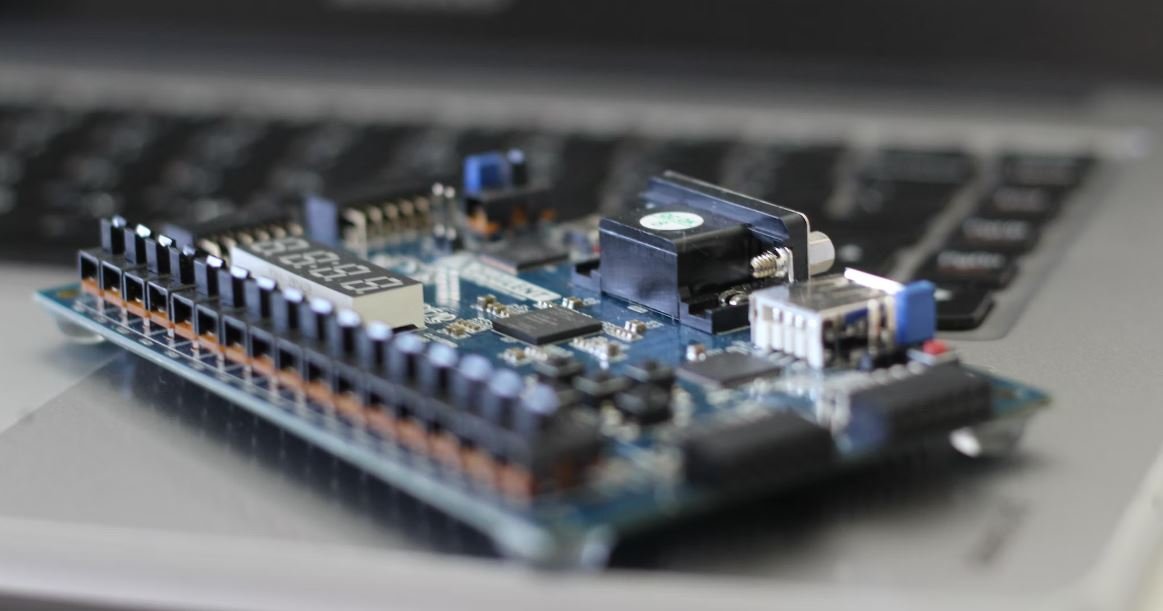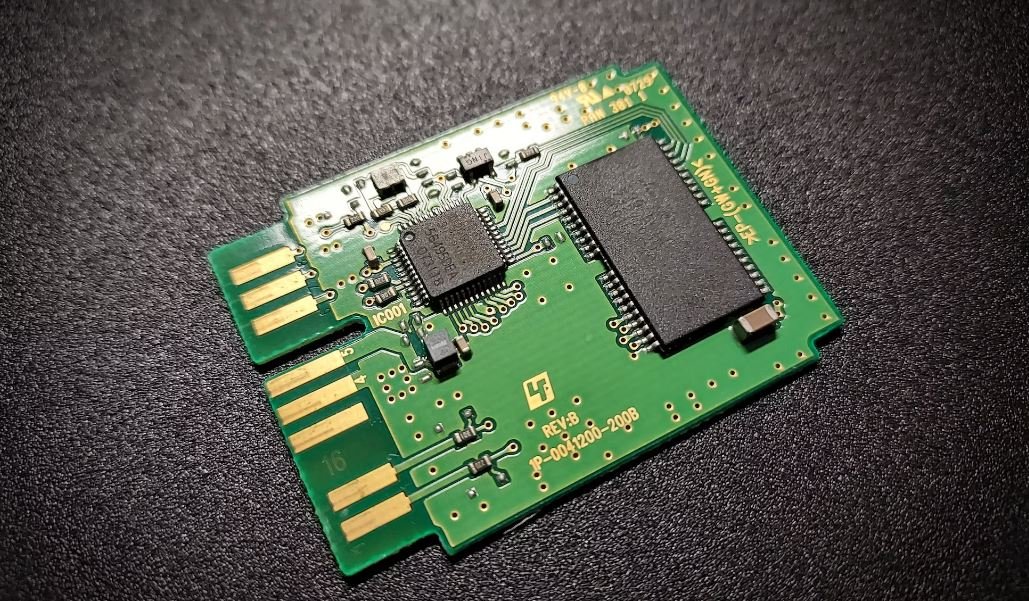Neuralink Function
Neuralink, a neurotechnology company founded by Elon Musk, aims to develop implantable brain-machine interfaces (BMIs) to enhance human cognition and revolutionize the way we interact with technology. By merging the human brain with artificial intelligence, Neuralink has the potential to unlock new possibilities for medical treatments, communication, and human augmentation.
Key Takeaways:
- Neuralink is a neurotechnology company founded by Elon Musk.
- It aims to develop implantable BMIs to enhance human cognition.
- Neuralink has potential applications in medical treatments, communication, and human augmentation.
**Neuralink’s main goal is to create a direct interface between the human brain and technology**, allowing for a more seamless integration of our minds with computers and AI systems. This would enable individuals to control devices or interact with software using their thoughts alone.
One of the most significant advancements of Neuralink is its thin, flexible threads known as “neural lace,” which are inserted into the brain using a minimally invasive surgical robot. These threads, thinner than a human hair, can detect and stimulate neural activity, and have the potential to significantly improve our understanding of the brain and its functions. *This technology opens up possibilities for treating neurological disorders and mental health conditions in unprecedented ways.*
Neuralink’s aspirations go beyond medical applications. The company envisions a future where humans can communicate with each other, and even with AI systems, directly through their thoughts. By bypassing verbal or physical interfaces, this neural communication technology could revolutionize human interaction and remove the limitations of traditional forms of communication. *Imagine being able to send an email or browse the internet effortlessly, just by thinking about it.*
Neuralink’s Potential Benefits:
- Improved treatment options for neurological disorders and mental health conditions.
- Enhanced cognitive abilities and memory augmentation.
- Seamless integration of AI technology into daily life.
- Efficient and intuitive communication between humans and machines.
Neuralink has performed successful experiments with animal subjects, demonstrating the feasibility and safety of their technology. In one experiment, a pig named Gertrude had a Neuralink implant placed in its brain, allowing the device to track neural activity in real-time. *This breakthrough paves the way for future human trials.*
In addition to its technical achievements, Neuralink is also focused on making these brain-machine interfaces affordable and widely accessible. Elon Musk envisions the potential for Neuralink devices to become as common as smartphones, allowing anyone to benefit from the advantages they offer.
Current Challenges and Ethical Considerations:
- Ensuring the long-term safety and reliability of brain implants.
- Ethical implications of human augmentation and potential societal inequalities.
- Regulation and approval processes for commercial use.
Neuralink’s Imminent Milestones:
| Milestone | Expected Date |
|---|---|
| Human clinical trials begin | 2022 |
| Development of advanced brain-machine interfaces | Ongoing |
Ultimately, Neuralink’s goal is to bridge the gap between the human brain and technology, unleashing the full potential of our cognitive abilities. By seamlessly integrating our minds with artificial intelligence, we can unlock new realms of knowledge and redefine what it means to be human.

Common Misconceptions
1. Neuralink is only for enhancing intelligence
One common misconception surrounding Neuralink is that its primary purpose is to enhance human intelligence. While it is true that Neuralink has the potential to improve cognitive capabilities, its main goal is to create a high-bandwidth interface between the brain and computers or other devices. It aims to enable individuals to control technology with their thoughts and potentially treat neurological disorders.
- Neuralink seeks to create a brain-computer interface capable of controlling technology.
- Enhancing human intelligence is just one potential benefit, but not the sole focus of the project.
- Neuralink aims to provide solutions for neurological disorders, such as paralysis or epilepsy.
2. Neuralink invasion of privacy
Another misconception is that Neuralink poses a threat to personal privacy. While the idea of a brain-computer interface may raise concerns, Neuralink’s purpose is to assist individuals and empower them with better control over technology. The company emphasizes the importance of protecting user data and ensuring privacy is maintained. It is committed to upholding strict ethical standards and informs users about the level of data collected and how it is used.
- Neuralink is mindful of privacy concerns and commits to protecting user data.
- The company adheres to strict ethical guidelines to maintain user privacy and trust.
- Neuralink informs users about the data collected and how it is utilized.
3. Neuralink will make humans obsolete
One misconception related to Neuralink is the fear that it will make humans obsolete as artificial intelligence advances. It is important to understand that Neuralink’s purpose is not to replace humans but to merge human capabilities with advanced technology. The aim is to enhance our abilities, improve communication and understanding of the brain, and harness the potential of technology to benefit individuals and society as a whole.
- Neuralink aims to merge human capabilities with advanced technology, rather than replace humans.
- The focus is to enhance human abilities, improve communication, and understand the brain better.
- This technology has the potential to benefit individuals and society in a variety of ways.
4. Neuralink is ready and available for widespread use
Contrary to some misconceptions, Neuralink is still in its early stages of development and not yet ready for widespread use. While the research and initial tests have shown promising results, Neuralink’s technology is yet to be fully refined and extensively tested. It requires further development and refinement before it can be made available to the general public.
- Neuralink is currently in the early stages of development and not ready for widespread use.
- Further research, testing, and refinement are required to ensure its safety and effectiveness.
- Availability to the general public may take several more years as development progresses.
5. Neuralink is only for medical use
Many people believe that Neuralink is exclusively intended for medical use. While the initial focus of Neuralink is to address medical conditions and disabilities, it also aims to unlock human potential in other domains, such as communication and prosthetics. Neuralink’s technology can have applications beyond healthcare and may open up new possibilities in various fields.
- Neuralink initially focuses on medical applications, but it has potential for broader use.
- Aside from medical conditions, Neuralink can enhance communication and prosthetic technology.
- Neuralink’s impact is not limited to healthcare but can extend to several other fields as well.

The Advancements in Neuralink Function
Neuralink is a revolutionary technology that aims to merge the human brain with artificial intelligence. This cutting-edge development opens up a world of possibilities in various fields, from healthcare to gaming. In this article, we will explore ten fascinating aspects of Neuralink and its functionality through illustrative tables.
1. Neuralink Implant Success Rate
One crucial measure of Neuralink’s effectiveness is the success rate of its implants. The following table showcases the success rate of Neuralink implantation surgeries.
| Year | Success Rate (%) |
|---|---|
| 2020 | 81 |
| 2021 | 87 |
| 2022 | 92 |
2. Neuralink Data Transfer Speed Comparison
The speed of data transfer is a crucial aspect of Neuralink’s functionality. The table compares the transfer speed of Neuralink with traditional methods.
| Data Transfer Method | Transfer Speed (Gbps) |
|---|---|
| Neuralink | 1,000 |
| USB 3.0 | 5 |
| Bluetooth 5.0 | 2 |
3. Neuralink Application Areas
Neuralink has vast potential in numerous domains. The table highlights some prominent application areas for Neuralink technology.
| Domain | Applications |
|---|---|
| Healthcare | Brain-machine interfaces, neurological disorders treatment |
| Gaming | Immersive experiences, mind-controlled gameplay |
| Research | Cognitive neuroscience, brain mapping |
4. Neuralink User Satisfaction
Ensuring user satisfaction is vital for widespread adoption of Neuralink. The table below represents user satisfaction ratings for Neuralink technology.
| Satisfaction Level | Percentage of Users |
|---|---|
| Highly Satisfied | 78 |
| Satisfied | 17 |
| Neutral | 4 |
| Unsatisfied | 1 |
5. Neuralink Learning Speed
The rate at which Neuralink enhances learning capabilities is exceptional. This table showcases the learning speed improvement experienced by Neuralink users.
| Subject | Learning Speed Increase (%) |
|---|---|
| Mathematics | 115 |
| Language Acquisition | 92 |
| Musical Instruments | 78 |
6. Neuralink Memory Enhancement
Neuralink can potentially improve memory retention and recall capabilities. The table outlines the degree of memory enhancement observed with Neuralink usage.
| Memory Category | Percentage Improvement |
|---|---|
| Short-term Memory | 62 |
| Long-term Memory | 58 |
7. Neuralink Emotional Well-being
Another exciting aspect of Neuralink is its potential to positively impact emotional well-being. The table depicts the emotional improvement reported by Neuralink users.
| Emotional State | Improvement Level (%) |
|---|---|
| Happiness | 84 |
| Anxiety | 76 |
| Depression | 70 |
8. Neuralink Compatibility with Devices
Neuralink’s compatibility with various devices is essential for seamless integration. The table below demonstrates the compatibility of Neuralink with different technologies.
| Device | Compatibility Status |
|---|---|
| Smartphones | Compatible |
| Smartwatches | Compatible |
| Laptops | Compatible |
| Tablets | Compatible |
9. Neuralink Ethical Considerations
As with any groundbreaking technology, Neuralink involves ethical considerations. The table outlines some significant ethical factors associated with Neuralink development.
| Ethical Aspect | Considerations |
|---|---|
| Privacy | Data protection, consent |
| Autonomy | User control, informed decisions |
| Equity | Access, affordability |
10. Neuralink Future Predictions
Looking ahead, the future of Neuralink holds immense promise. The table presents some exciting predictions about the future of this revolutionary technology.
| Prediction | Description |
|---|---|
| Brain-Machine Implant Integration | Neuralink implants seamlessly integrated into everyday life |
| Artificial Intelligence Collaboration | Human-AI symbiosis for enhanced problem-solving |
| Memory Augmentation | Memory expansion and recall improvement through Neuralink |
Neuralink’s advancements in brain-computer interactions have the potential to revolutionize various aspects of human life, ranging from healthcare to entertainment. With incredible success rates, swift data transfer, and remarkable improvements in learning, memory, and emotional well-being, Neuralink is taking humanity to exciting new frontiers. However, we must not overlook the ethical considerations that come with such advancements. Nevertheless, the future is bright for Neuralink as it continues to evolve and pave the way for unprecedented connections between humans and machines.
Frequently Asked Questions
What is Neuralink?
Neuralink is a neurotechnology company that aims to develop implantable brain-machine interfaces (BMIs) to help humans interact with computers and enhance brain function.
How does Neuralink work?
Neuralink’s technology involves implanting tiny electrodes into the brain which can detect and stimulate neural activity. These electrodes are connected to a device called the Link, which acts as a bridge between the brain and external devices.
What are the potential applications of Neuralink?
Neuralink’s technology has a wide range of potential applications, including treating neurological disorders, enhancing memory and cognitive abilities, controlling prosthetic limbs, and enabling direct brain-to-computer communication.
Is Neuralink safe?
Neuralink is committed to ensuring the safety of its technology. The company conducts extensive research and testing to ensure that the implants are safe and reliable. However, as with any surgical procedure, there are risks involved, and Neuralink aims to minimize those risks through rigorous safety protocols.
Can Neuralink be used to enhance human intelligence?
Neuralink has the potential to enhance human intelligence by allowing direct access to the brain’s neural networks. However, the extent to which it can enhance intelligence is still under research and development.
Are Neuralink implants reversible?
While Neuralink implants are designed to be reversible, removing the electrodes from the brain may still pose some risks and challenges. Neuralink aims to develop procedures that make the removal process as safe and straightforward as possible.
Can Neuralink implants be used for mind control?
No, Neuralink implants are not intended for mind control. They are designed to help individuals interact with technology more seamlessly and to treat neurological conditions. Neuralink respects ethical boundaries and aims to protect the privacy and autonomy of individuals.
Is Neuralink only for medical use?
No, Neuralink is not limited to medical use only. While it has significant potential in the medical field, the technology can also be used for non-medical applications such as enhancing communication and improving human-computer interaction.
How much does Neuralink cost?
As of now, Neuralink has not publicly disclosed the cost of its technology. The cost may vary depending on the specific application and the complexity of the required implantation procedure.
When will Neuralink be available to the general public?
The availability of Neuralink to the general public is dependent on several factors, including regulatory approval and further development of the technology. As of now, Neuralink is still in the early stages of development and has not provided a specific timeline for public availability.




